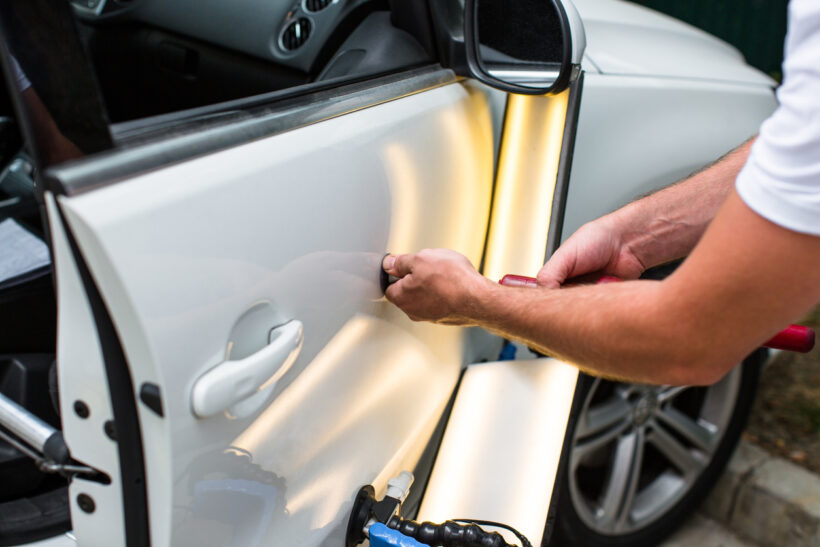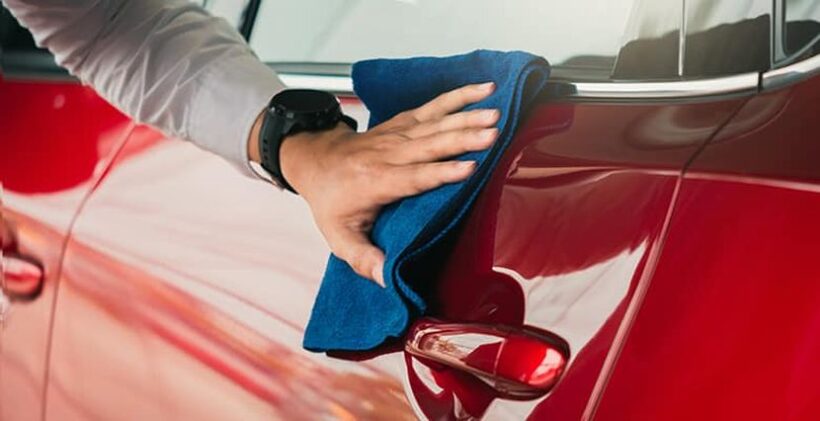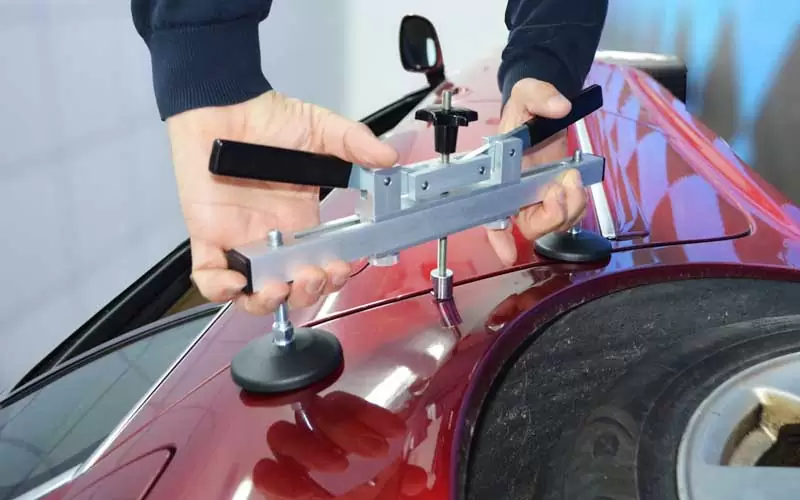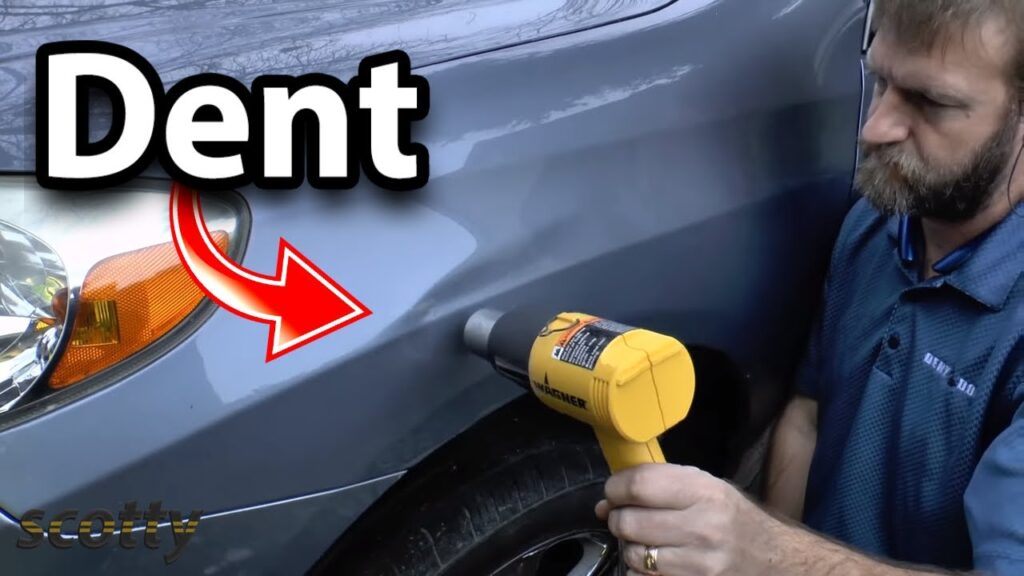Paintless dent removal (PDR) is one of the go-to options for getting rid of cars’ surface damage. Since it doesn’t require paint stripping and repainting, it’s a cheaper and quicker process than other repairs. In many cases, car owners bring their vehicles to their trusted auto shops whenever their rides have dents.
If the car’s damage is minor, its owner may choose to fix it. Suppose you’re planning to fix your car’s dents anytime soon and would prefer to do it yourself. In that case, you may consider knowing some tips to make the process successful. Here’s an article that could help you. Read on!
1. Assess The Damage

According To FiveStarHail, PDR can easily restore a car to its normal condition. Yet, a damage assessment is still necessary. It’s the initial step in a car dent removal process. In this step, you need to know the possible causes and the severity of the dents. Typical causes are hailstones and car accidents, such as sideswiping, open car doors, and bumps and falls. Different causes can result in various types of damage, including:
- Round type – This is a circular dent caused by spherical objects, such as golf balls.
- Sharp type – This is deeper than other types and caused by angular and protruding objects.
- Hail type – This is typically caused by a barrage of hailstones from which tiny, round damages appear. Paintless dent repair can still correct this issue.
- Creased type – This may refer to the damage, to a broader extent, caused by hard hits from enormous and rock-hard objects or road accidents. This usually requires professional restoration and repairs.
- Ding – This is smaller than a typical dent and may only require instant repairs.
As part of the assessment, you could also check the following considerations:
- Body material – You may consider the make and the car’s body material in this aspect. If the material is steel, you may choose tools with better lifting and gripping power.
- Tool availability and versatility – In most cases, you may need full-feature dent kits to address various damages. These are essential, especially if your car is covered with dings and creases. However, minimal damage may only need simple ding and crease removal tools.
- Dent removal skills – If you’re already adept at removing even the most complex dings and creases, you may proceed with the process. If you’re still learning its ropes, you may need to stick with the most minor and shallow dent types.
2. Choose The Appropriate Solution
After knowing the cause, you may proceed to size up the damage. If the creases are too deep and wide that the auto paint has been scraped, you may need to bring your car to a pro. On the other hand, if the damage is manageable, you can choose between the following solutions:
- Metal T bar method – In this approach, you need to put a metal T bar at the backside of the damaged area. Then, gently massage the hollow until it gradually goes back to normal.
- Pulling method – In this method, you need a puller, a gripping tool, a glue gun, and suction tabs to pull the dents back to their normal flatness. In this option, you can apply a special glue that’d be pulled out by a gripping tool in case the suction tabs fail.
3. Use The Right Tools
Apart from the tools mentioned above, you can still have other tools, such as:
- PDR lights and reflection boards – These refer to the tools used to see the depth of the dents. The lights emit the necessary illumination while the reflection boards show what happens in the damaged area’s backside.
- Whale tails hand tool- These refer to the tools used to go under a brace and leverage the other portion of the tool to the opposite side of the dent.
- Door and side panel hooks – These are ideal for repairing the damage to the doors and trunk. Generally, these are coupled with panel protection to protect windows from damage.
- Dent lifter – While lifters have various types and sizes, most of these tools are made of rubber or silicone. These are generally pressed onto the hollow parts to pop them out. In some cases, these work well with suction tabs on the backside.
4. Clean The Car Thoroughly

Before carrying out the steps, you need to ensure that your vehicle is free from dirt, grime, and dust. These things can hinder the glue or coat application should you wish to stuff in the damaged area with a layer of body filler. You may need to remove ice from your car during winter if it’s covered.
In addition, you may determine the actual severity of the damage if the vehicle’s body is completely spotless. You could use a clean cloth to wipe the car’s exterior if it’s just minor damage. Otherwise, you could also use a power washer but use it gently.
5. Make The First Coat The Deepest
In coat application, you may need to spread a first deep layer on the dents. You may also need to ensure that the first coat is evenly spread. The succeeding applications could be easier to put on because the base layer is thicker and more durable.
Dent removal may need extra care in many cases. Aside from coating, you might need to polish the previously dinged area. For this purpose, you may choose to sand and seal the area neatly. In doing this, select the tools that could provide the gentlest buffing and sealing. When done correctly, the damaged parts could look brand new.
Wrapping Up

The success of a process usually results from how you carry out its steps and knowing the considerations. This could include the proper selection of paintless dent removal tools and methods. This may also consist of preparing and post-repair care of the damaged areas.
You could refer to the insights provided in this article to know how to bring back the greatness of your ride. You may talk with a seasoned car restoration and repair professional for more ideas. Lastly, you can subscribe to auto blogs or join a car-loving community where vehicle repair and maintenance hacks are shared.

